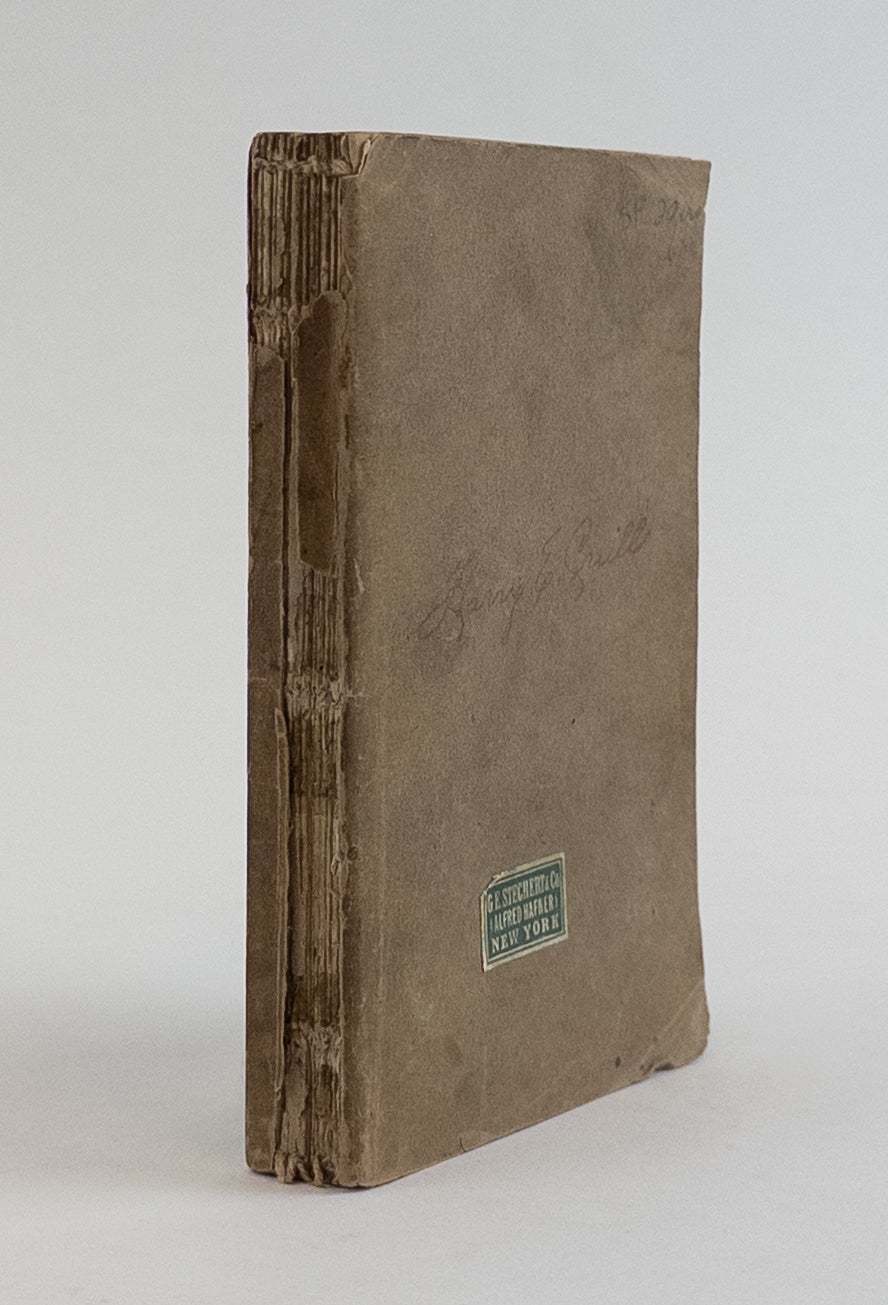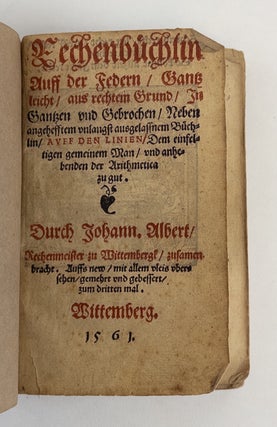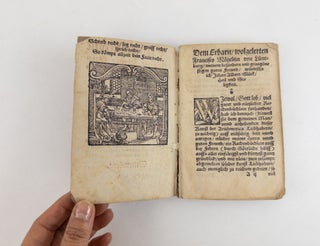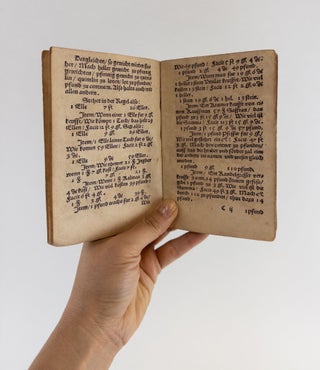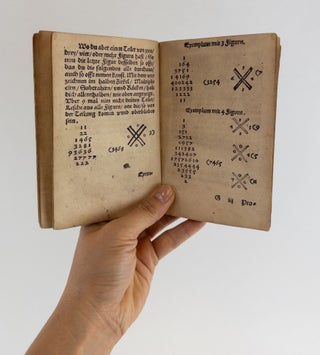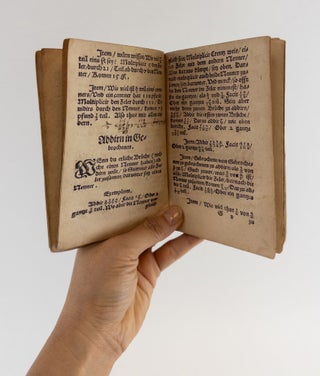RECHENBÜCHLIN AUFF DER FEDERN, GANTZ LEICHT, AUS RECHTEM GRUND
Wittemberg [Wittenberg]: Georgen Ramen Erben [Georg Rhau], 1561. Presumed First Edition. Octavo, 110 unnumbered leaves. In Very Good condition. In later paper wraps. Collation: A-O8, P6; P3-P6 detached and loose within. Binding separated at K. Parts of paper spine missing. Red ink name stamp to front cover, small bookseller ticket to front cover. G4v with small ink arithmetic, small trimming loss to top edge of N5v. Woodcut on verso of title page of three men reckoning at a table, woodcut on last leaf of a man weighing metal in scales. Calligraphic 'Tabula Pythagore' on verso of second to last leaf, which is a 10x10 grid of the numbers 1 to 10 multiplied. Extremely scarce in any edition. SP consignment. Shelved in Case 3.
1343956
Shelved Dupont Bookstore
Price: $20,000 save 40% $12,000
NOTES
Worldcat lists 1 copy at Columbia University, USTC lists 2 copies, one at Universitätsbibliothek Salzburg, and one at Staatsbibliothek Bamberg
USTC 689957, Smith: Rara Arithmetica, pp. 178-80;
Smith: "In each part [counter reckoning and algorism] there are many commercial problems, and the book ranks as one of the most practical of its day. It is a valuable source of information as to the commercial activities of its time."
Smith lists the first edition as being Wittenberg 1534, followed by three Wittenberg editions (1541, 1553, 1554), two Frankfurt editions (1541, 1558), and one Magdeburg edition (1559) before this Wittenberg edition of 1561, and followed by Wittenberg (1564), Magdeburg (1579), and finally Wittenberg (1586)
A Wittenberg Rechenmeister used in the middle of the 16th century. A Rechenmeister, or 'Arithmetic master' describes an initially medieval profession that taught arithmetic and elementary mathematics in German or the respective vernacular. In doing so, they met the growing demand that arose from the rapidly increasing trade throughout Europe and the increase in trans-dominion taxing and banking. As mathematics played no essential role in the Latin church school system, it had to be taught separately. The arithmetic masters created these books at the beginning of the 16th century, which were mostly used for teaching at their private arithmetic schools. In addition, mathematical writers and town clerks mainly wrote works suitable for self-study. Arithmetic books were among the first educational and vernacular writings to be printed, with German most successful European vernacular for printed math books after Italian. By the middle of the sixteenth century, growing demand caused many of these texts to be issued in multiple editions. These texts were used for two major groups. The first were the schools designed to teach writing, calculating, and bookkeeping skills to young men for their careers as merchants, and the second those already educated who had a desire for self-study. This was a time period which pitted the new algorithmic mathematics against the more traditional abacus method, and even in this Rechenbüchlin Albert exclusively used the abacus or reckoning board method.




